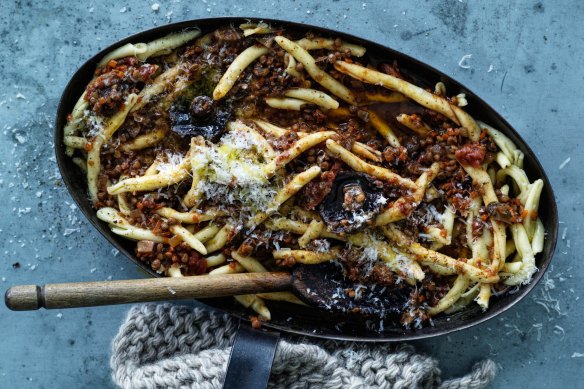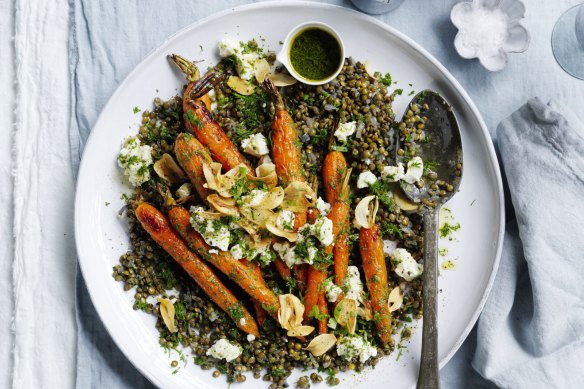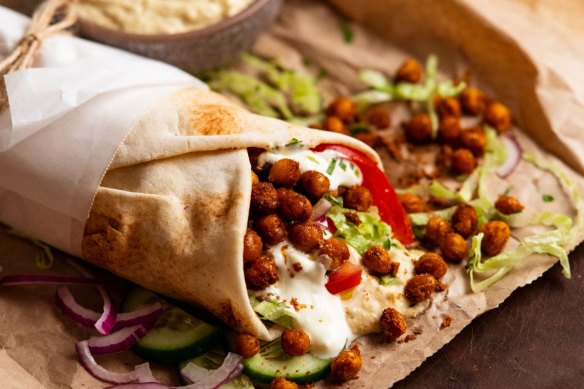The single best way to cut your food bills (and up your health)
When it comes to saving on our groceries, it’s tempting to sub the rib-eye for cheaper cuts like bacon, brisket and bolognese. But with studies showing that adding just one meat-free meal per week could shave $40 a month off your bill, it seems prudent to start experimenting with more vegetarian meals to help us ride out interest rate and rental rises.

Sounds good in theory, but with a Heart Foundation report showing that half of Australians lack confidence cooking with legumes, it appears we’ve got some culinary upskilling to do if we want to embrace cooking with lentils, chickpeas and beans.
“When you know how to use them properly and mix up the flavours, they’re more complex than you think they’d be,” says Pamella Tomio, head chef of Melbourne vegan restaurant Lona Misa.
And considering you can base a family meal off a simple $1 can and amplify your health along the way, it seems they make one hell of a hero ingredient.
“Legumes are super foods – they’re good for us, they’re cheap, and we grow them in Australia, so they tend to have low food miles,” says Jemma O’Hanlon, senior dietitian at The Heart Foundation.
“The plant protein fills us up and is important for building and maintaining muscle mass, and it gives us energy. The dietary fibre is excellent for gut health and heart health, and they also contain vitamins, minerals and other bio-active compounds.”
Here’s how to up your legume game.

Start with lentils
If you’re new to vegetarian cooking, Tomio suggests starting with lentils because the little balls of goodness don’t require overnight soaking.
“They’re a really manageable type of legume, that cook in about 30 to 40 minutes,” she explains.
“Cook them in water and salt until they’re tender, then strain the hot water, rinse them in cold water and add some ice to stop them cooking.”
She suggests freezing portions ready to defrost when you need them for curries, tagines or pasta.
“You can scatter them on a salad made with green leaves, sliced leek, nuts and dried fruits to add sweetness. Make a dressing with lemon juice, mustard, honey and some olive oil,” Tomio says.
Simplify the soaking
Twelve hours might sound like a lot of food prep, but Tomio says soaking larger legumes, such as dried beans and chickpeas, is a very basic process that will require little mental load once you’ve done it the first time.
She suggests investing in decent glass containers to put the dried legumes in, then covering them with water and putting them in the fridge.
“Soak them for 12 hours, changing the water at least twice by rinsing them and re-covering in water,” she says.
After the 12 hours, they’re ready to be cooked.
“Put them in a saucepan with water and bay leaves,” Tomio suggests.
“Leave them to simmer for about 30 to 40 minutes until they are tender. Stir them gently every 10 minutes, but not too often otherwise the grains break.”

The case for cans
O’Hanlon suggests busy home cooks stock up on cans of beans, lentils and chickpeas that offer different tastes, textures and colours, and require a simple “rinse then stir in” approach.
“You can add them to a stew, a soup or a salad,” she says.
“Throw kidney beans in your taco mix or chickpeas in a curry or lentils to bulk out your bolognese.”
Embrace big flavours
This is no time for minimalism – the key to undoing legumes’ reputation for being bland and chalky is by using big flavours.
“Every time I go to the supermarket, everyone I see goes for onions and garlic, which I love, but leek is [under-rated],” Tomio says.
“It contains lots of sugars that caramelise and bring so much flavour.”
O’Hanlon suggests taking your inspiration from multicultural cuisines like Indian, South American and Middle Eastern.
“Use lots of herbs and spices instead of salt. Dried herbs are really handy because you can keep in your pantry for a lot longer and they’re cheaper as well,” she says.
“Canned tomatoes have a lot of flavour and pair well, and mushrooms can add an umami flavour.”
Quick ideas for legumes
Fritters: Mash legumes and use as a base for fritters. “You just add flour or gluten-free flour, corn and herbs like parsley and spring onion,” Tomio suggests. “Deep fry them and they’re always beautiful.”
Stew: “Use beans, potatoes and peas for extra colour, with South American or Middle Eastern flavours [such as] smoked paprika, turmeric, salt and pepper,” Tomio says.
Soup: “Take your soup from an entree to a main meal by bulking it up with a can of beans or chickpeas,” O’Hanlon says. “It really does give it a lot of oomph and it will keep you fuller for longer.”
The best recipes from Australia's leading chefs straight to your inbox.
Sign up